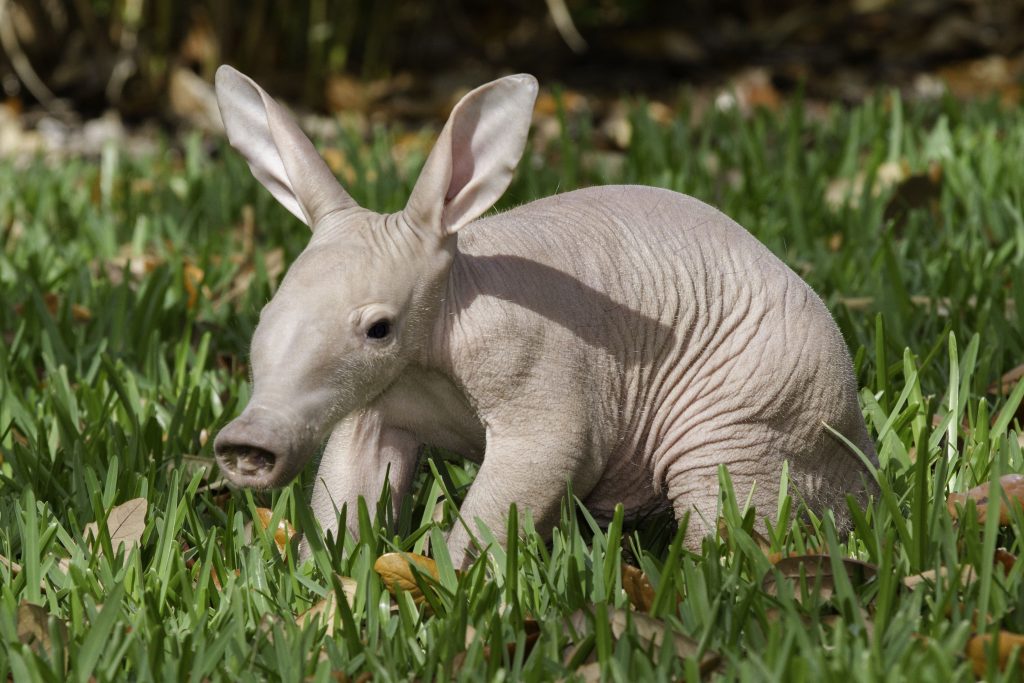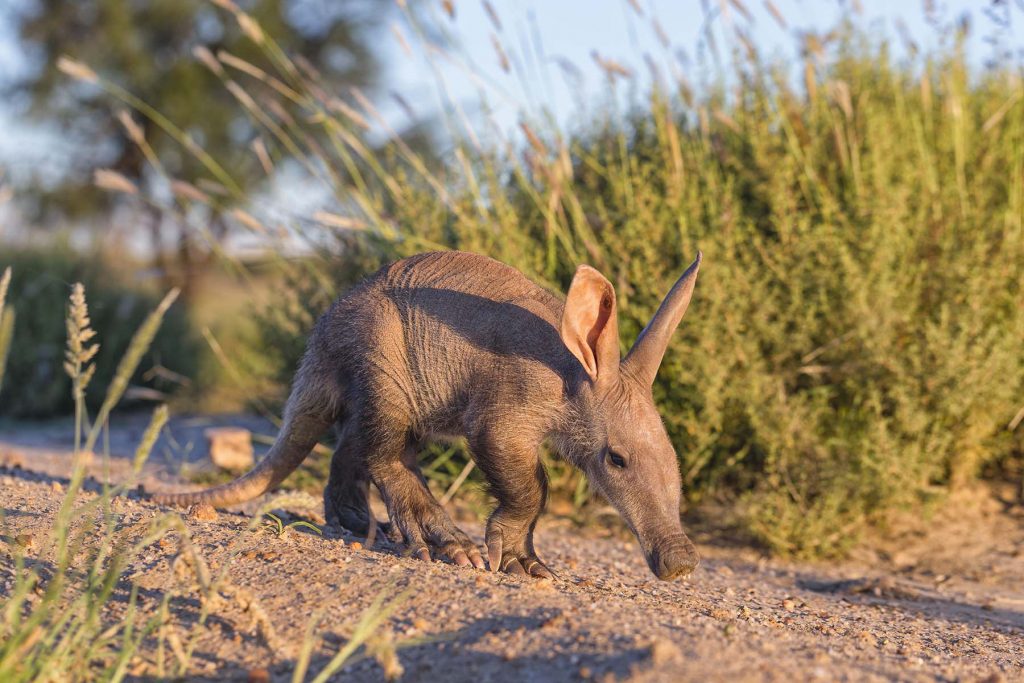One of the most distinctive characteristics of the aardvark is their teeth. Instead of having a pulp cavity in their tooth, they have a number of thin tubes of dentine (a calcified tissue of the body), each containing pulp held together by cementum (a specialized calcified substance covering the root of a tooth). The teeth have no enamel coating and are worn away and regrow continuously.
The Aardvark is vaguely pig-like. Its body is stout with an arched back and is sparsely covered with coarse hairs. The limbs are of moderate length. The front feet have lost the pollex (or ‘thumb’), resulting in four toes, however, the rear feet have all five toes.

The Aardvark is a nocturnal mammal and is a solitary creature that feeds almost exclusively on ants and termites. The only fruit eaten by aardvarks is the aardvark cucumber. An aardvark emerges from its burrow in the late afternoon or shortly after sunset and forages over a considerable home range covering 10 to 30 kilometres, swinging its long nose from side to side to pick up the scent of food.
Aardvarks can consume about 50,000 insects in one night. Aardvarks began eating termites and ants thirty-five million years ago and they are still their preferred meal. A hill of termites or ants is not enough to satisfy an aardvark, however, so it searches for entire termite and ant colonies.
These colonies march in columns 33 to 130 feet (10 to 40 metres) long, which makes it easy for the aardvark to suck the termites/ants through its nostrils. When attacking a termite/ant mound, the aardvark starts digging at the base with his front claws. Once the termites/ants begin escaping, it extends its tongue and traps them with its sticky saliva. Aardvarks also eat locusts and a type of grasshopper.

Newborn aardvarks are hairless with pink, tender skin. They remain in the burrow with their mothers for two weeks. After two weeks they follow their mothers in the nightly search for food. The aardvark cub does not eat solid food until around 3 months, preferring its mother’s milk until that time. The cub begins eating termites at 14 weeks and is weaned by 16 weeks.















